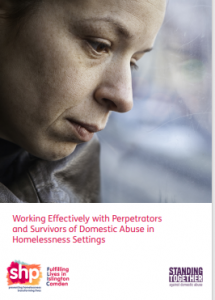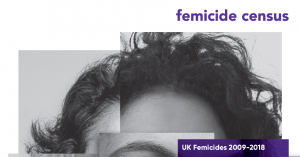A guidance document aimed at practitioners to improve working with survivors and perpetrators in homeless settings has been published. The charities in the UK who published the document include SHP (preventing homelessness transforming lives), FLIC (Fulfilling lives in Islington and Camden), Standing Together Against Domestic Abuse.
The document has been produced after consultation with practitioners (women’s specialists and perpetrator specialists in the domestic abuse field) and people with lived experience of homelessness and domestic abuse victimisation and perpetration.
The aim of the guidance was to:
- increase safety for survivors with multiple disadvantage
- to motivate perpetrators of domestic abuse to recognise and address their behaviour
- to enable staff to recorgnise abusive behaviour in homelessness settings
- to improve skills, confidence and safety for practitioners in these scenarios
The types of homelessness settings targeted were: outreach teams, supported accommodation, floating support teams and housing first services.
The report highlights factors which may be at play in these homeless settings with clients experiencing and perpetrating domestic abuse such as financial factors, drugs and alcohol problems, isolation and minimising/denying/blaming behaviours.
Some of the top tips recommended in the report include:
Two professionals working with a couple (where domestic abuse is present in the relationship) to increase safety, validate the survivors position and to engage the pair in separate conversations. Recommendations are provided on how to link with perpetrator services available and ideas are given on how to validate survivor’s experiences. A FAQ’s section talks through common scenarios and practical advice for staff on how to respond to difficult situations when working with couples where domestic abuse is occurring.
You can access the report here.


